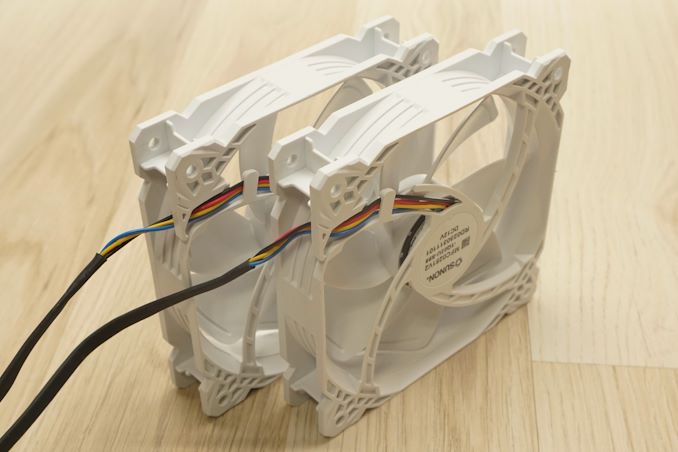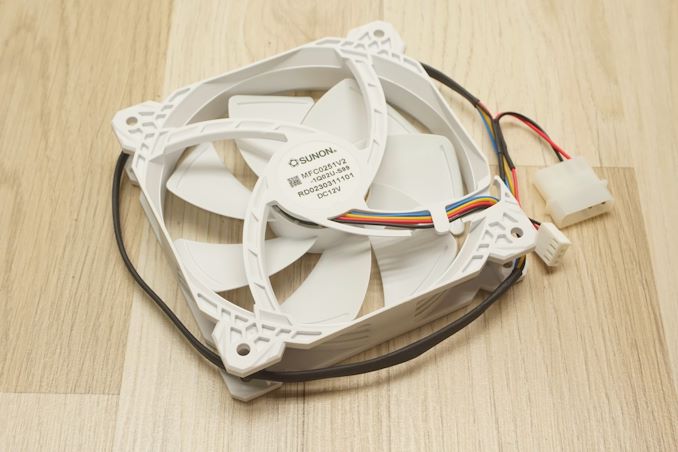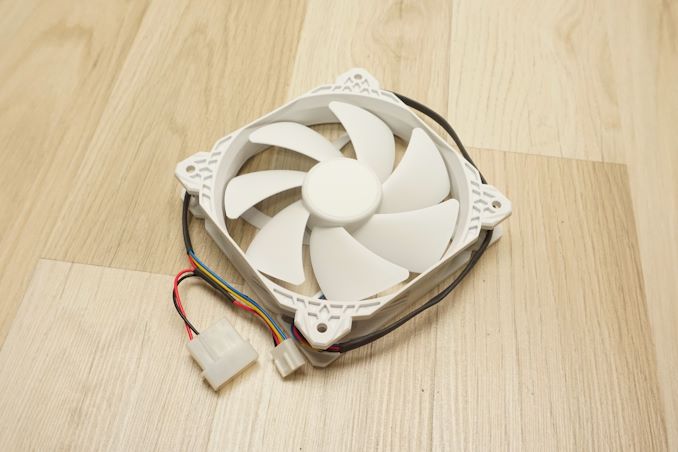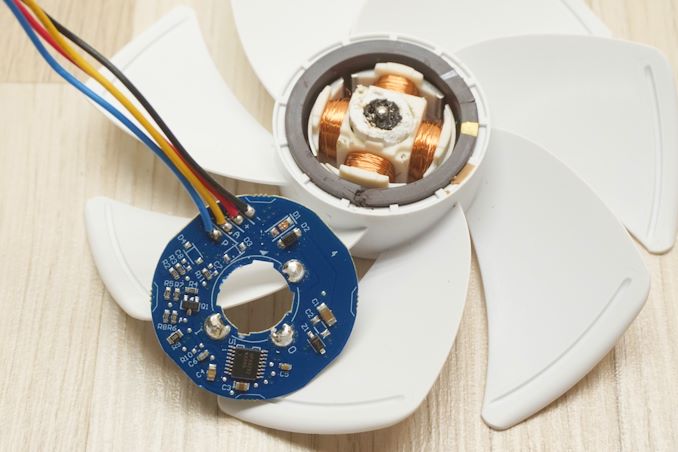Capsule Review: Sunon Maglev 120mm Fan
by E. Fylladitakis on May 17, 2024 1:00 PM EST- Posted in
- Cases/Cooling/PSUs
- Fans
- Sunon
- MagLev

Founded in 1980 and headquartered in Taiwan, Sunon (aka Sunonwealth Electric Machine Industry Co., Ltd.), stands out as a prominent global producer of fans, blowers, and thermal management systems. The company has made a name for itself in the fan industry with a comprehensive product line that includes DC brushless fans, micro blowers, CPU coolers, and various other cooling technologies. They are one of the oldest and most renowned fan manufacturers on the world – and not just for PC applications, but for just about anything in need of something smaller than a ceiling fan, spanning from IT to automotive and industrial sectors.
Within the PC space, the company is best known for its proprietary MagLev (Magnetic Levitation) technology, which uses magnetic forces to levitate the rotor shaft, drastically reducing friction and wear. This innovative design improves the durability and performance of their fans, particularly in reducing operational noise and improving high-temperature performance. Sunon introduced the patent and their first MagLev products all the way back in 90s.
The 120mm Sunon MagLev fan that we are reviewing today – MFC0251V2-1Q02U-S99 – is a new, high-performance fan engineered primarily for PC applications, with an emphasis on longevity and functionality. It features Sunon's advanced Vapo-Bearing MagLev Engine, which allegedly ensures a quieter operation and longer lifespan by minimizing friction. This particular fan has a maximum speed of 1900 RPM and all of the bells and whistles of advanced cooling fans, including a wide range PWM speed control (10-100%).
Distinguished by its crisp white color and unique frame design, this fan is aimed PC builders going for a clean and modern aesthetic. The "gaming" designation by the manufacturer clearly divulges their intentions regarding their targeted audience. By default, these fans have both a 4-pin connector and also a Molex connector for their direct connection to the PSU.
Fan Testing Methodology
We are testing fans using an Extech HD350 differential manometer, an Extech AN200 velocity meter, and a custom 3D printed apparatus designed for this specific purpose. The apparatus features a simple but effective shutters mechanism that allows us to test the unobstructed (maximum) volume flow of a fan, the fully obstructed (maximum static) pressure of the fan, and multiple points in between, allowing us to compose the actual P-Q performance chart of any fan. The RPM reading is taken with the fan unobstructed (maximum flow), as the fan speed varies depending on the airflow impedance in conjunction with the design of the fan’s blades.
For noise measurements, we are using an Extech HD600 high sensitivity SPL meter. The noise of the fan is measured from 15 centimeters away, not one meter as IEC certifications require, as that would be far too great a distance to measure differences between nearly silent products. Note however that we are measuring the noise level of a fan with its flow unobstructed and the fan, to the best possible degree, uncoupled from the environment. The addition of fan grills, the installation on a cooler, and any other form of obstruction will increase the generated noise, as both aerodynamic and vibration noise will be added into the environment.
Test Results & Conclusion
The Sunon MFC0251V2-1Q02U-S99 is a robust performer across the entirety of the performance chart. At its maximum speed of 1900 RPM, it offers an airflow of 58.9 CFM and a static pressure of 2.48 mmH2O. However, that performance comes with a noise output of 41.3 dB(A), which is quite noticeable and, in most cases, not really ahead of its competition. When compared to the Corsair ML120, another fan with a magnetic levitation engine, the Sunon model tends to offer significantly better performance by running about 300 RPM faster while generating about the same level of noise.
Overall, Sunon's 120mm MagLev fan stands out as a high-quality part, and better still it's priced competitively at around $11, offering substantial value for those looking for robust cooling solutions within budget constraints. When it's used correctly, the fan easily competes with, and generally outperforms, the best 120 mm products currently available – albeit not immensely so.
However "used correctly" is the operative term, as the MagLev engine makes the fan particular about its orientation. In short, these fans are not meant to be installed with the engine facing upwards, as this can jeopardize the integrity of the Vapo mechanism. As a result, Sunon's MagLev fan is really only good for horizontal airflow – front and back air intake/exhaust – and shouldn't be used for vertical airflow at the top and bottom of computer cases.
Despite that, the 120mm MagLev fan does excel when it's in its niche, especially at its price. The biggest hurdle, in that case, is just acquiring a fan, as Sunon is primarily geared up to target the bulk OEM market and doesn't sell their fans in individual retail units. So prospective buyers will need to skip the Neweggs and Amazons of the world, and look instead at electronic and industrial suppliers like Digikey and Mouser.















22 Comments
View All Comments
GeoffreyA - Saturday, May 18, 2024 - link
Front and back are vertical. ReplyGeoffreyA - Saturday, May 18, 2024 - link
Though it's right for airflow direction. ReplyFrankSchwab - Saturday, May 18, 2024 - link
The original paragraph is ambiguous - does "horizontal uses" mean "attached to a horizontal surface" or "with the motor shaft horizontal"? From context we can assume the latter, but referring to the motor shaft orientation is unusual and should be called out if that's the reference for horizontal/vertical. ReplyZoolook13 - Sunday, May 19, 2024 - link
Well the issue relates to the motor axis direction so it's logical to refer to that. ReplyRyan Smith - Monday, May 20, 2024 - link
That's fair. I've reworded the article to make it clear that we're talking about the direction of airflow. Thanks for the feedback! Replyback2future - Sunday, May 19, 2024 - link
[ maybe it's about computer cases these days do not have a primary orientation for vertical | horizontal anymore (vs. previous cases with optical drives, having a main orientation wrt to cd/dvd/bluray drives loading mechanism or maybe still with liquid cooling these days) ] ReplySkipPerk - Sunday, June 9, 2024 - link
In the olden days, or for old timers who dislike some modern case designs, computer cases often had a direct out-draft at the top of the case, often used by liquid coolers. My old case has two or three input fans and one output on the rear, and two on the top. When I had a liquid loop, I had radiators at the front and top.I still think many old cases are better than current offerings (case labs, for example). Reply
Dante Verizon - Saturday, May 18, 2024 - link
Yes, it does sound strange, unless you're talking about the direction of the air. ReplyFindecanor - Sunday, May 19, 2024 - link
It's the same for many liquid-bearing fans: horizontal airflow only.I'm using old classic GentleTyphoon with ball bearings because they can be mounted for vertical airflow without issues. I mounted them with sleeves for vibration damping, which greatly reduced noise. Most modern fans have rubber corners or similar to reduce noise.
I'm surprised that this Sunon Maglev fan doesn't seem to have any damping rubber parts at all. Reply
SkipPerk - Sunday, June 9, 2024 - link
I do not understand. Reply